The Space-focused cohort is comprised of individuals across ASU's School of Earth and Space Exploration and Ira. A Fulton Schools of Engineering. This initiative supports cutting-edge research, conducts capture planning around funding opportunities, and creates channels to establish interdisciplinary, industry-adept research teams.
Explore by interest
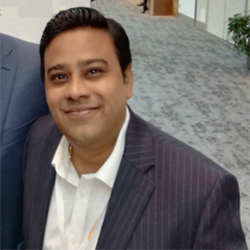
Dr. Kumar Ankit's group at ASU specializes in the development and application of mesoscopic modeling approaches and their integration with continuum approaches for both fundamental and applied research in microstructure science and engineering. His group is currently interested in deciphering computational pathways to optimally design microstructure processing routes. Target areas include solidification, solid-state transformations and grain coarsening in multicomponent alloys and geomaterials, electromigration-induced damage, and self-organization in polymers and vapor-deposited films.
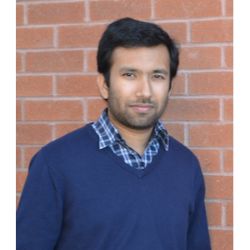
Dr. Ayan Banerjee is an Assistant Research Professor at CIDSE, ASU. His research involves cyber physical systems and medical control systems with special focus on safety security and sustainability. He teaches Data Mining and Mobile Computing courses. Dr. Banerjee is currently working on model based operational safety verification of autonomous system. By monitoring sensor data from an autonomous system, he proposes a technique to mine operational model. This model can then be used to validate requirements, check system safety, or explain failures.
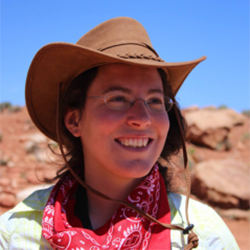
Dr. Melanie Barboni’s area of expertise is igneous petrology/geochemistry with a strong emphasis on both field and cutting-edge analytical methods, particularly in geochronology. Her research interests are diverse and currently include 1) understanding the time scales and conditions of magmatic processes involved in the formation and evolution of sub-volcanic reservoirs and their link with volcanic eruptions (the so-called “plutonic-volcanic connection”), 2) applying state-of-the-art chronology and isotope geochemistry to unravel the origin and early evolution of the Moon, and 3) developing new analytical tools - particularly linking the chronology and chemistry of accessory minerals such as zircon - to allow better understanding of magmatic processes in both Earth and planetary sciences.

Dr. Sanchayeeta Borthakur is an observational astronomer specializing in extragalactic astronomy. Her research focuses on understanding how galaxies are connected to each other and influence each other’s evolution despite the large distances that separate galaxies. She uses state-of-the-art telescopes such as the Hubble Space Telescope and the Very Large Array to probe various elements in the outskirts of galaxies and beyond.
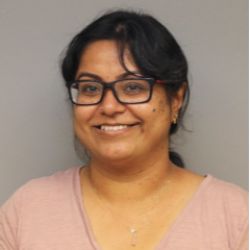
Dr. Maitrayee Bose is an isotope cosmochemist, investigating the chemistry of asteroids and comets to understand how they originated and processes prevalent in small planetary bodies. Her current research interests include: Isotopic and elemental analyses of dust condensed in ancient stars called stardust or pre-solar dust grains (i.e., material that predates the Solar System) Isotopic and molecular information of organic matter in primitive chondritic meteorites and interplanetary dust particles Hydrogen isotopes and water contents of minerals present in meteorites from Mars, Moon, Vesta, and small planetary bodies Isotopic measurements of volatiles (Li, B) in high-temperature, refractory minerals in meteorites, and the use of isotopes to trace the origin and evolution of small bodies in our solar system.
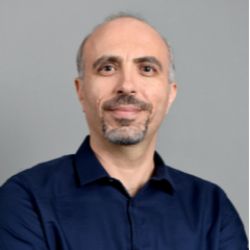
Dr. Selcuk Candan's primary research interest is in the area of management of non-traditional, heterogeneous, and imprecise data. His group has had cross-disciplinary collaborations with a wide spectrum of disciplines and industry. Their research has strong impact in diverse domains, from providing efficiency and agility to e-businesses to enabling students who are blind accessing educational materials. His publishing work includes over 100 articles, many book chapters, and nine patents. His other research interests include big data, data management and analysis, and multimedia including video and image retrieval.
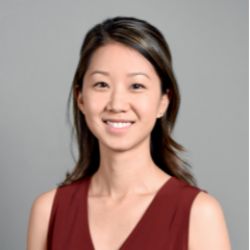
Dr. Erin Chiou is interested in trust in technology, human-automation interaction, and human-autonomy teaming in challenging work environments, such as high workload, low workload, and degraded communication conditions. Her background is in industrial & systems engineering with a focus on human factors, and my current research is investigating social factors like trust and accountability in human-AI systems.
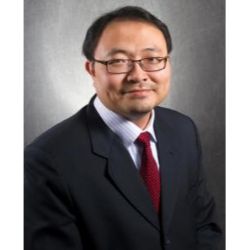
Dr. Oswald Chong’s two research foci include, first, clustering, modeling and disseminating sustainable engineering knowledge, and, second, understanding and modeling the degradation and recovery processes (EDEC) of materials, products, buildings, infrastructure, and systems. He focuses on energy, water, and materials interactions with one another and how they could be conserved. His research crosses path with the following theories and concepts: (1) knowledge mining and modeling; (2) causality models between impacts and outcomes; (3) cloud technology; (4) BIM platform; (5) Big Data; (6) predictive analytics; (7) sustainability; (8) engineering knowledge; (9) information technology; (10) life cycle analysis; and (11) materials, products and systems behaviors. Sample research include: (1) Sustainable Design and Project Planning; (2) Eco-efficiency; (3) Technical Metabolism; (4) Energy Efficiency; (5) Sustainable Information Modeling; (6) Socio-Economics of Eco-Efficient Communities; (7) Corporate-Society Sustainability Interface; (8) Life Cycle Performance; (9) Building Information Modeling; (10) Social and Human Dimensions; (11) Carbon Management and Baseline Estimating; and (12) Carbon Taxation and Cap and Trade. In addition, he also conducts research in professional development for the estimating professions, business operations and construction productivity research. Chong's publications are mainly in the areas of building defects, sustainability and social-human dimensions.
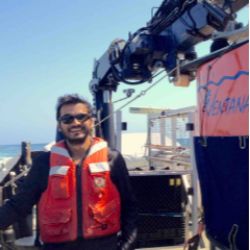
Dr. Jnaneshwar Das holds the Alberto Enrique Behar Research Professorship at the school, with expertise in robotic monitoring, machine learning, autonomous systems, and unpiloted vehicles. His research contributions include mixed-initiative spatio-temporal observation of environmental and biological processes, exploiting mathematical models, and algorithms for closing the loop on data-driven robotic sampling.

Dr. Delgado’s research focuses on soil and water microbial processes that sequester, recycle, and transform carbon and chlorine compounds for (i) contaminant removal, (ii) minimization of harmful chemicals in food production, (iii) improvement of soil quality, and (iv) biofuel precursor production. Delgado has spent her entire academic career at ASU, most recently completing a postdoctoral fellowship in environmental engineering. During her postdoctoral appointment, Dr. Delgado studied strategies for enhanced bioremediation by combining biodegradation and chemical oxidants for remediating soils contaminated heavy petroleum hydrocarbons. Prior to that, she received a doctorate in microbiology in 2013 and bachelor's degree in microbiology in 2008 at ASU.
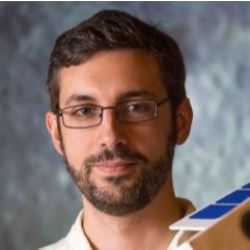
Craig Hardgrove joined ASU in 2015. He is the Principal Investigator (PI) of the LunaH-Map mission, the first planetary science mission designed, built and operated by ASU. He is also a participating scientist on the Mars Science Laboratory Curiosity Rover Dynamic Albedo of Neutrons (DAN) team and PI of SINGR (Single Scintillator Neutron and Gamma-Ray Spectrometer) instrument development project. Prior to ASU, he was an assistant staff scientist with Malin Space Science Systems, MSL and CTX operations (2012-2013). Professor Hardgrove has experience working on many Mars rover and orbiter missions (MER Spirit and Opportunity, MSL Curiosity, Mars Reconnaissance Orbiter-CTX, Mars-2020 Mastcam-Z). His research interests are in planetary geochemistry, specifically volatile abundances in the near-surface, as well as applications of infrared remote sensing on planetary surfaces to understand sedimentary processes. He is also working in small spacecraft (CubeSat) development, as well as in development of scientific instrumentation for future interplanetary CubeSat missions.
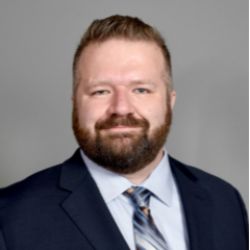
Dr. Christian Hoover’s primary research interests are: structural mechanics, solid mechanics, multi-scale material characterization, and structural testing with a focus on micro and nano-mechanical response. He specializes in the study of energy dissipation mechanisms, especially fracture mechanics, and is particularly interested in the composition of both materials that collide with our planet and with materials sent up to space. Dr. Hoover has developed many experimental techniques to test the integrity of the materials, and detect potential flaws.
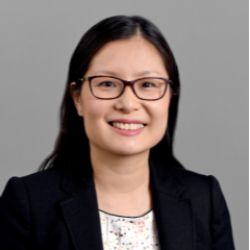
Dr. Qing Hua Wang’s research is focused on the synthesis, characterization, and application of 2D nanomaterials such as graphene and transition metal dichalcogenides, in particular studying the interactions of these materials with molecules and materials for applications in electronics and energy. Her research interests also include scanning probe microscopy, optical spectroscopy, self-assembly and nanofabrication. In her research group, Dr. Qing Hua Wang’s works on engineering and understanding the fundamental properties of nanostructured and quantum materials for applications in electronics, biology, and sustainability. Wang’s research has resulted in publications in Nature Chemistry, Nature Nanotechnology, Nano Letters and the Journal of the American Chemical Society.
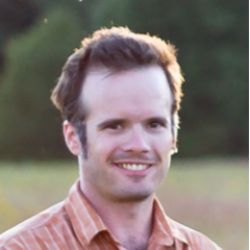
Dr. Daniel Jacobs performs research focused on the detection and characterization of 21cm fluctuations in the early universe and developing future high-performance radio arrays capable of precision cosmology. He is a co-I of the Hydrogen Epoch of Reionization Array, a ground-based precursor to the Cosmic Dawn Mapper, where he serves as Commissioning Scientist. He is the PI of the External Calibrator for Hydrogen Observatories (ECHO; Jacobs et al. 2017), an unmanned airborne calibration transmitter. Prof. Jacobs is the Systems Engineer for the Star-Planet Activity Research Cubesat (SPARCS), a smallsat UV telescope scheduled for launch in 2021 to characterize the statistics of flares from M-dwarf stars, faculty advisor to student cubesat projects, and director of ASU’s smallsat ground station. Dr. Jacob’s other research interests include: an astronomy focus on radio observations for cosmology, exoplanet, and heliospheric science (which includes development of receivers, high bandwidth swarm interconnect, and lunar based radio observations).
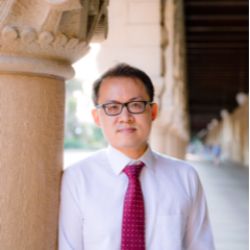
Dr. Jeonglae Kim is an assistant professor of aerospace and mechanical engineering in the School for Engineering of Matter, Transport and Energy at Arizona State University. His research interests include large-eddy simulation of high-speed turbulent flows with multi-physics, aeroacoustics, flow control and optimization. Before joining ASU, Kim was a postdoctoral fellow with the Center for Turbulence Research at Stanford University, studying a variety of turbulent flows involving multi-physics phenomena using novel high-performance computing.
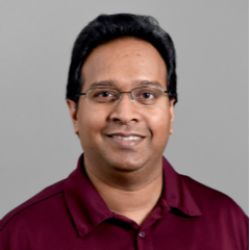
Dr. Vikram Kodibagkar conducts research in a multitude of different areas including cellular and molecular imaging of cancer, multimodality probe and reporter molecule development, MR oximetry, and magnetic resonance physics/technique development. He heads the ProBE lab at ASU, which emphasizes comprehensive understanding of theory and techniques in order to build the next generation of imaging leaders with its main thrust in non-invasive measurement of tissue oxygenation and metabolism. Dr. Kodibagkar is interested in exploring avenues to investigate and integrate varied topics such as radiation, hypoxia exposure, and microgravity in a space-like environment.
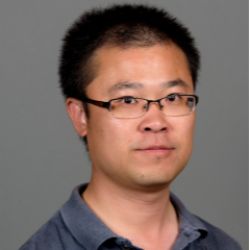
Dr. Mingming Li is an assistant professor in the School of Earth and Space Exploration. He is a geodynamicist who uses numerical simulations to investigate the structure, dynamics and evolution of the Earth and other planets. He is particularly interested in understanding the surface expressions of deep mantle dynamics and how the Earth and other solar and extrasolar planets evolve differently. He uses numerical modeling, in collaboration with seismologists, geochemists, petrologists and mineral physicists to investigate the nature of mantle convection, and its links to surface observations. He is also interested in understanding how other solar and extrasolar planets evolve differently than the Earth. He also enjoys developing methods and writing codes to apply to important, unexplored science questions.

Dr. Michael Line is an extrasolar planetologist investigating the atmospheres of extra solar planets and brown dwarfs with the goal of understanding their composition, climates, and origins from a theoretical/modeling perspective. He is an assistant professor in SESE as of Fall 2016 teaching classes in planetary atmospheres and astro-statstics. He is involved in Hubble Space Telescope, Spitzer Space Telescope, and James Webb Space Telescope observations of transiting exoplanet atmospheres. Professor Line's current interests include: Radiative transfer and chemical modeling of planetary atmospheres, Bayesian inference, brown dwarf and extra-solar planet atmosphere compositions and climate. Dr. Line works with observers to plan, execute, and interpret observations of extra-solar planet atmospheres.
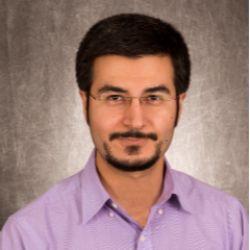
Dr. Hamid Marvi’s research aims to study fundamental physics behind interactions of biological systems with their surrounding solid, granular and fluidic environments. Utilizing biological insights derived from these studies, he would like to develop bio-inspired robotic systems and programmable interfacial structures for search and rescue, exploratory and medical applications. He conducts computational and experimental studies to explore interactions of robotic systems with granular media at low gravity. He performs coupled Discrete Element Method (DEM) and Multi-body Dynamics (MBD) simulations to simultaneously model both the granular environment and the robotic system interacting with it. In addition, he has developed experimental setups to study such interactions at different volume fractions, inclination angles, and gravity levels using different granular media such as lunar simulant (BP-1) and Mars Mojave Simulant (MMS). Dr. Marvi is particularly interested in developing multi-modal space mobility platforms for: 1- exploring icy world, 2- exploring complex geological features such as canyons, crevices and smaller craters inaccessible by state-of-the-art planetary rovers, and 3- collection and retrieval of poorly accessible samples.

Dr. Ryan Milcarek is interested in generating fuels from water and/or carbon dioxide and enhancing energy storage in space applications. He works with solid oxide fuel cells and solid oxide electrolysis cells that can be used to convert water and carbon dioxide to either fuel for storage or to power. Dr. Milcarek’s current research focuses on micro-tubular Flame-assisted Fuel Cells (FFCs), system-level hybrid combustion/FFC applications including micro cogeneration and two-stage combustors, microcombustion, manufacturing of ceramic materials for solid oxide fuel cells (SOFCs), and energy modeling. He also conducts research in engineering education in areas of sustainability, resilience and fuel cell education.
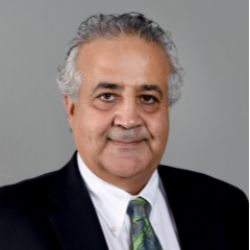
Dr. Barzin Mobasher is responsible for a broad and interdisciplinary research program dealing with theoretical and experimental mechanics of solids. The current emphasis is on development of new construction materials and processes for their manufacture, analysis and design. Other areas of research and scholarly activities include active projects and collaborations in areas dealing with aerospace engine containment systems, biomechanics of refractive surgeries, steel structural systems, high speed testing, durability of building materials, transport properties of solids, fracture mechanics of composites, and composites for power delivery systems, damage characteristics, performance-based specifications and various educational and service activities.
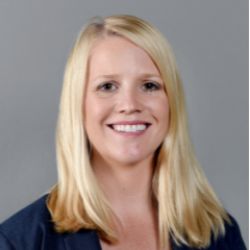
Dr. Rebecca Muenich is a watershed modeler focused on surface hydrology and water quality, especially in agricultural ecosystems. She focuses on evaluating the impact of land management decisions within the food-energy-water nexus. Her research interests include watershed and environmental modeling, agricultural ecosystem management, urban agriculture, food-energy-water nexus, stakeholder engagement, climate and land management impacts on surface water hydrology and water quality, and multifunctional landscapes to enhance ecosystem services. Dr. Muenich would like to use remote data sensing to track changes in the landscape, hydrology, and agriculture. She is also interested in designing integrated waste and food systems for space.
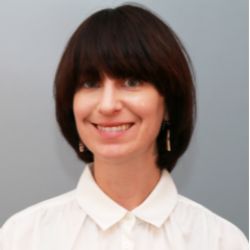
Dr. Allison Noble is an observational astronomer whose research is aimed at studying galaxy evolution and formation through the lens of environment, mass, and time. In particular, she focuses on the most extreme end of these parameters: the dense regions of galaxy clusters, the most massive galaxies in the Universe, and the cosmic “high noon” of star formation. She utilizes many space-based and ground-based state-of-the-art facilities, including the Atacama Large Millimeter Array, the Hubble Space Telescope, the Herschel Space Observatory, and the Spitzer Space Telescope.
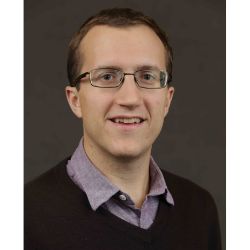
Dr. Joseph O’Rourke joined ASU as an assistant professor in the School of Earth and Space Exploration in January of 2020. He’s a planetary scientist specializing in understanding how dynamic processes deep within planets control their surface conditions over geologic time, including volcanism, tectonics, and magnetism. His research covers many planetary bodies including Earth, Venus, Mars, large asteroids and exoplanets. He’s increasingly involved in proposing spacecraft mission and instrumentation development for solar system exploration. His primary tools are theory and numerical simulations, but he is increasingly involved in mission and instrument proposals.
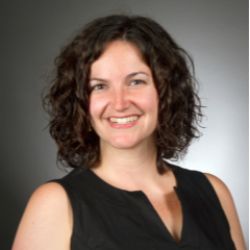
Dr. Kristen Parrish’s work focuses on integrating energy efficiency measures into building design, construction, and operations processes. Specifically, she is interested in novel design processes that financially and technically facilitate energy-efficient buildings. Her work also explores how principles of lean manufacturing facilitate energy-efficiency in the commercial building industry. Parrish is a member of the American Society of Civil Engineers, Society of Women Engineers and the Structural Engineers Association of Northern California.
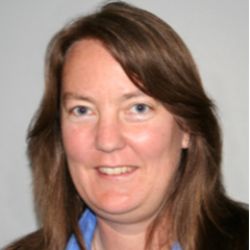
Dr. Jennifer Patience’s main research interests involve studying the properties of exoplanets, brown dwarfs and the disks around young stars. She utilizes high resolution imaging and spectroscopy to investigate atmospheres and architectures of planetary systems.
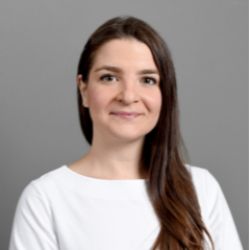
Dr. Giulia Pedrielli develops her research activity in the area of stochastics and simulation with a particular interest in simulation-based optimization. She has dealt with applications in several domains: manufacturing including automotive and de-manufacturing, power systems, supply chains, automation and warehousing, and health care. She is increasingly involved in real time control under uncertainty in the domain of cyber-physical systems including robotics.

Dr. Francois Perreault’s current research focuses on the development of biofouling control strategies in engineered systems, the use of novel nanomaterials for water treatment technologies, and in understanding the fundamental interactions of nanomaterials with biological systems. Stated research areas include water treatment, microbiology, biofouling control, and desalination.
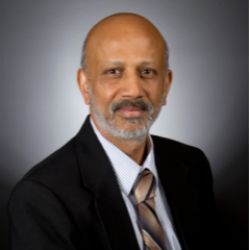
Dr. Subramaniam Rajan’s research interests include a wide variety of areas such as structural analysis via finite element method, design via numerical optimization techniques, understanding material behavior via experimental methods and constitutive modeling, and software development via object-oriented programming and parallel processing. He has worked on a variety of sponsored projects from such government agencies as the National Science Foundation (NSF), National Aeronautics and Space Administration (NASA), Federal Aviation Administration (FAA), US Army Research Laboratories (ARL), Arizona Department of Transportation and private companies such as Honeywell, Motorola etc. with applications in aerospace, civil, mechanical, semiconductor packaging, biomechanics, and the defense industries.
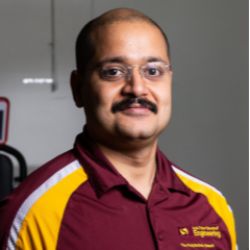
Dr. Sangram Redkar's research focuses on nonlinear dynamics and controls, machine design, inertial navigation and GPS, as well as design, dynamics and control of micro-electro mechanical systems.
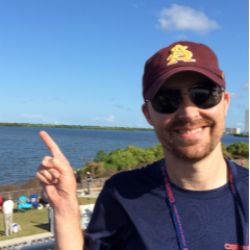
Dr. Devin Schrader’s research interests concern primitive astromaterials that remain unaltered since their formation in the early Solar System and meteorites that were thermally and aqueously altered on their parent asteroids. He primarily studies carbonaceous chondrites, ordinary chondrites and Hayabusa particles from asteroid Itokawa, but has worked on a range of extraterrestrial materials. His research aims to characterize primitive early Solar System material, determine its variability between meteorite groups, and understand its evolution. Dr. Schrader utilizes petrographic, chemical, isotopic, and thermodynamic data to constrain the pre-accretionary formation conditions and secondary thermal and aqueous alteration processes of small bodies in the early Solar System. He achieves this by analyzing the chemical and physical properties of primitive carbonaceous chondrites. He also studies ordinary chondrites, and has worked on Rumuruti-like chondrites, primitive achondrites, and iron meteorites. Dr. Schrader’s research utilizes advanced sample preparation techniques, such as focused-ion-beam lift-out and ultramicrotomy, alongside traditional optical microscopy and state-of-the-art techniques and equipment, including secondary ion mass spectrometry, field emission electron probe microanalysis, and scanning electron microscopy. He also provides sample science support for NASA’s OSIRIS-REx asteroid sample return mission as a Science Team Member.
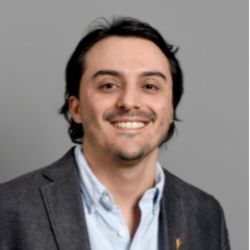
Dr. Jorge Safir’s research interests include network optimization, multistage optimization, and integer programming. In particular, he is motivated by applications of operations research in environmental planning, public policy, and urban planning. His space focused research interests are in modeling, formulation, and solution algorithm design for combinatorial and mixed-integer optimization problems. These can be used in 1) planning and scheduling of flight mission operations, including crew training and spacecraft/equipment activities; 2) project management and investment prioritization; and 3) sensor location for equipment monitoring, communication, and mission data capture; among others.
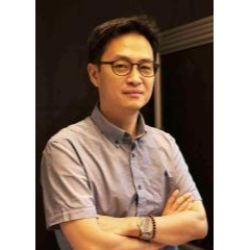
Dr. Sang-Heon (Dan) Shim’s research interests are centered on the physical and chemical properties of materials at high pressures and temperature, and the structure and evolution of Earth and planetary interiors. Dan Shim is a mineral physicist interested in the evolution, structure, and dynamics of the interiors of Earth and planets. He studies the chemical reaction, element partitioning, volatile storage, phase transitions, and physical properties of materials at the pressure and temperature conditions of Earth and planetary interiors by combining a wide range of high pressure techniques (laser-heated diamond-anvil cell and multi anvil press) with variety of analytical techniques (synchrotron X-ray, laser spectroscopy, aberration corrected electron microscopy, infrared spectroscopy, and mass spectrometry). His recent research includes phase transitions in the deep interiors of Earth and exoplanets, electronic transitions of iron in mantle silicates, volatiles storage in deep planetary interiors, redox conditions of deep planetary interiors, and structural changes in amorphous silicates at high pressure.

Dr. Evgenya Shkolnik is a professor of astrophysics at the School of Earth and Space Exploration at Arizona State University. She is an expert on exoplanets and stars, including the Sun. She studies stellar activity and star-planet interactions using telescopes on the ground and in space to answer questions involving stellar evolution and planetary habitability. Professor Shkolnik continues to execute new observations with existing telescopes both on the ground and in space. She is also now designing new small space telescopes dedicated to these experiments.
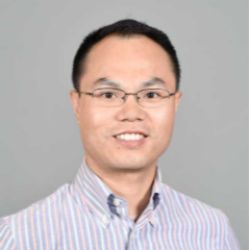
Dr. Junliang Tao’s research interests include bioinspired burrowing mechanisms, bioinspired geosystems, smart and sustainable geosystems and soil behavior. Tao has been researching the effective and highly efficient self-burrowing mechanisms of animals — looking at their varied subterranean locomotive abilities. He is extending this research to a new collaborative project to design and develop below-ground sensing networks using robots that mimic burrowing animals and plants. In 2018, Tao earned support from a National Science Foundation Early-Concept Grant for Exploratory Research Signals in the Soil award to develop “paradigm-shifting platform technology” for “self-boring robots” from which the next generation of underground wireless sensing networks can be launched (with Daniel Aukes and Hamidreza Marvi).
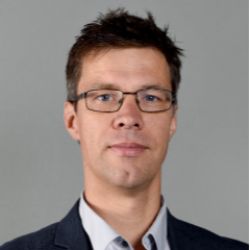
Dr. Leon van Paassen’s research integrates the fields of environmental biotechnology and geotechnical engineering, aiming to develop sustainable solutions, which improve resource efficiency and reduce the environmental impact of civil and mining engineering industry. His esearch Interests include engineering geology, environmental biotechnology, geotechnical engineering, resource engineering, soil physics, and geochemistry. Dr. Van Paassen is currently developing bio-based methods to improve soil material behavior (CBBG) and sustainable construction with earth materials, which involves expertise in geotechnical engineering, engineering geology, soil physics, soil exploration and characterization methods, structural geology, geomicrobiology, and numerical modeling of reactive transport in porous media.
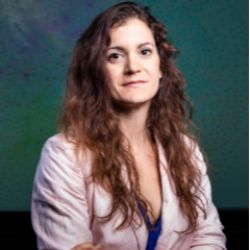
Dr. Sara Walker is an astrobiologist and theoretical physicist interested in the origin of life and how to find life on other worlds. While there are many things to be solved, she is most interested in whether or not there are ‘laws of life’ - related to how information structures the physical world - that could universally describe life here on Earth and on other planets. She is also Co-founder of the astrobiology-themed social website SAGANet.org, and is a member of the Board of Directors of Blue Marble Space. She is active in public engagement in science, with appearances at the World Science Festival and on "Through the Wormhole" and NPR's Science Friday.

